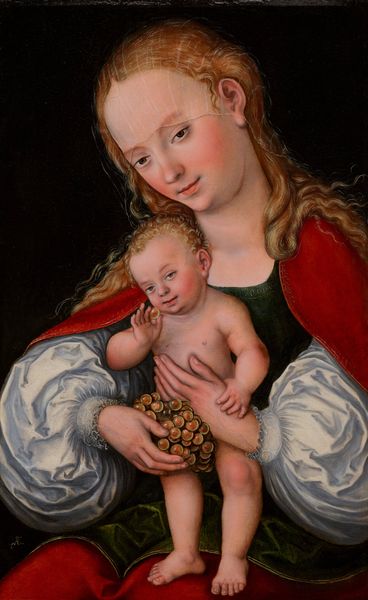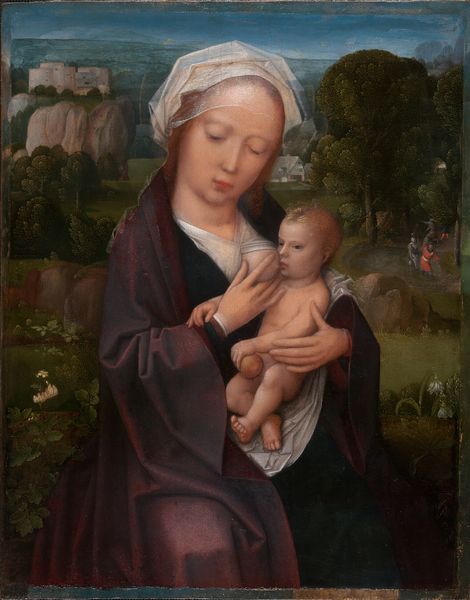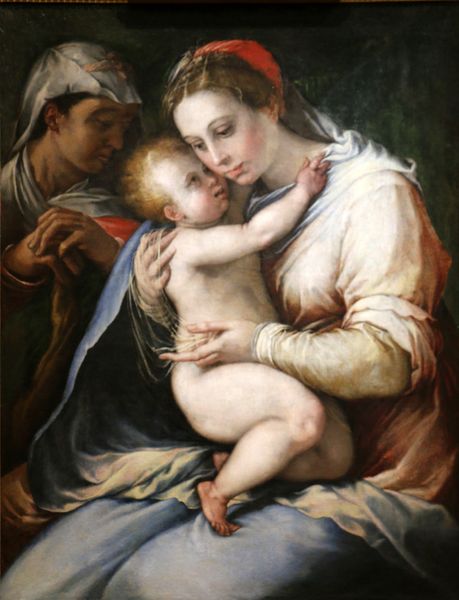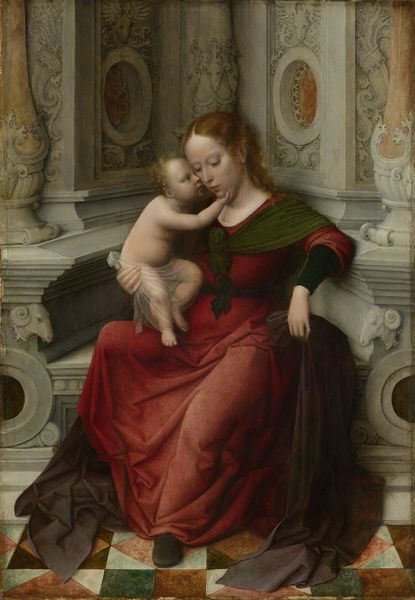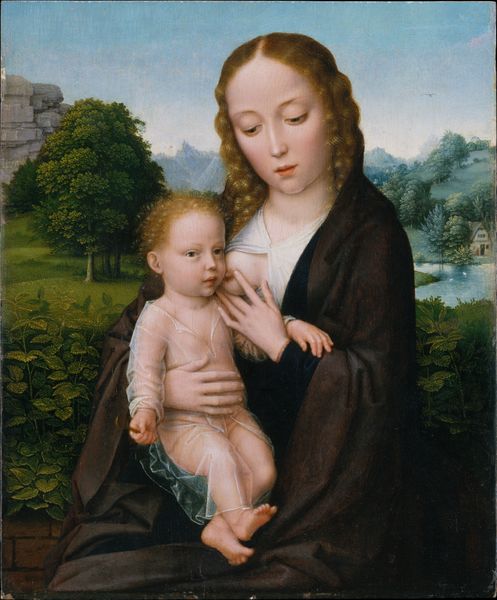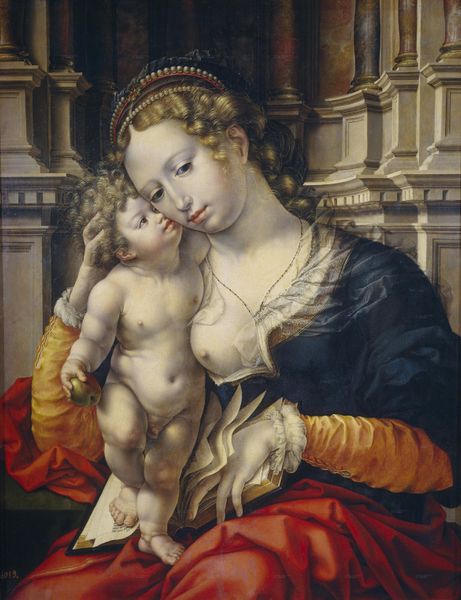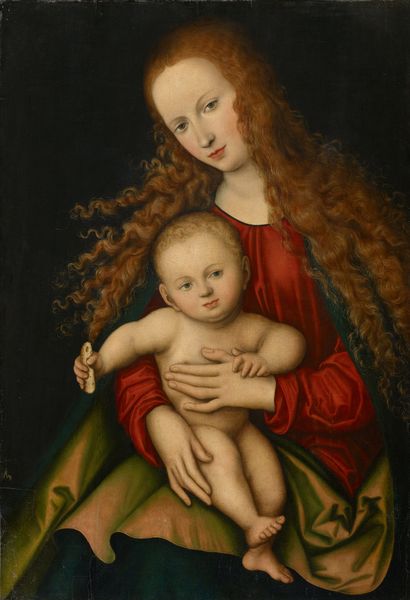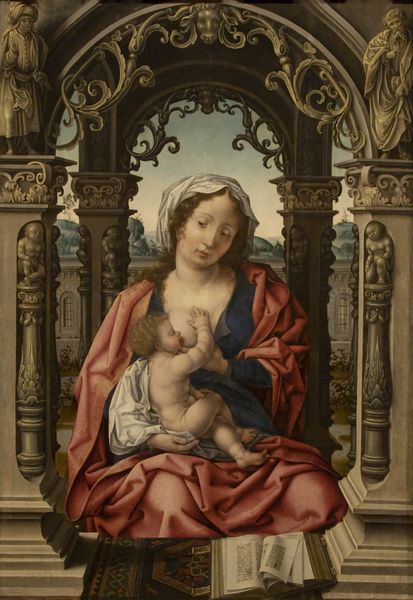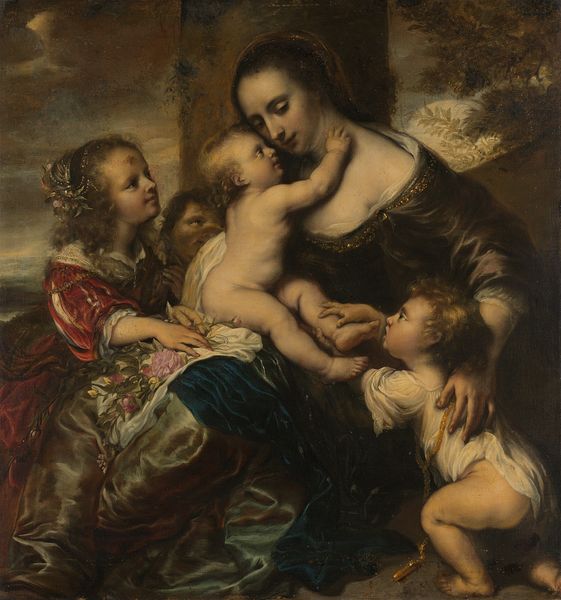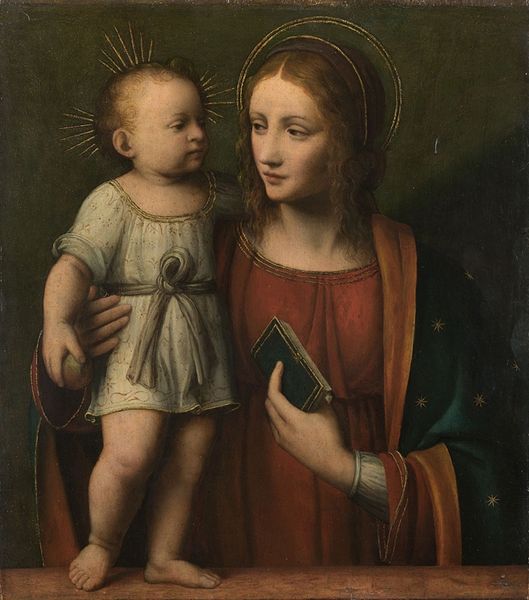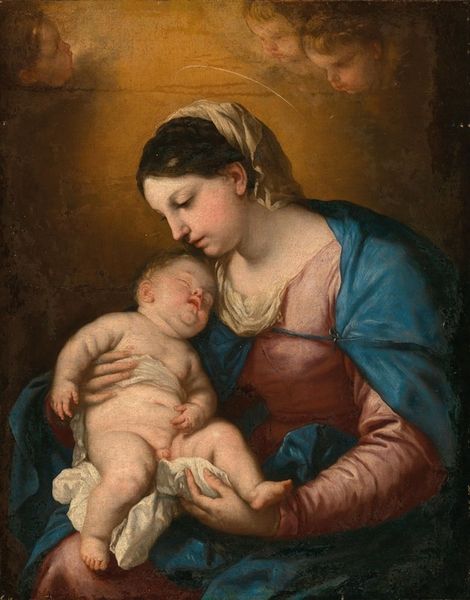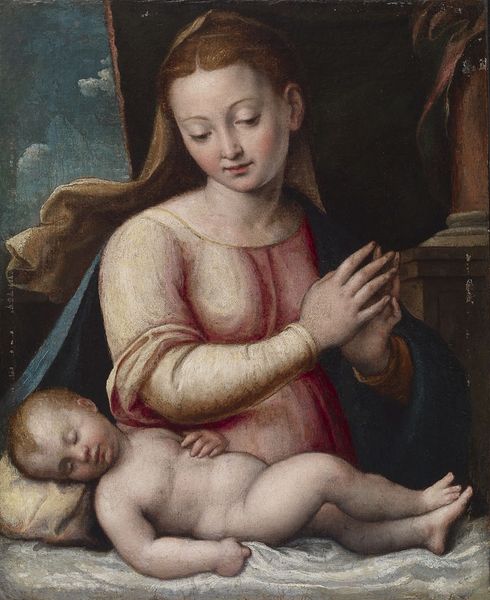
painting, oil-paint
#
portrait
#
portrait
#
painting
#
oil-paint
#
mannerism
#
figuration
#
history-painting
#
italian-renaissance
Dimensions: 22 3/4 x 17 1/4 in. (57.79 x 43.82 cm) (panel)
Copyright: Public Domain
Curator: Welcome. Before us hangs Cornelis van Cleve’s “Madonna and Child,” believed to be from around 1550 and held by the Minneapolis Institute of Art. Editor: My initial reaction is that of tender restraint. There's a delicate melancholia, especially in the way the Virgin Mary looks down, almost protectively, at the child. The figures feel monumental but subdued, due in no small part to the dark backdrop and tightly constrained scene. Curator: Restraint is a good word for it, and ties into the context of artistic production in the mid-16th century. Van Cleve was working during a time where artistic materials were highly regulated and the artist was often under the patronage of the church or wealthy elite. His choices of oil paints and probably expensive linen support speak to his status, and his skill in blending allows him to show the textures of the textiles, but that subdued quality is probably tied to restrictions imposed on workshops at the time. Editor: It's remarkable how that constraint focuses our attention on the symbolic elements. Note the butterfly the Christ Child is playfully grasping. Butterflies often represent the soul, and here it could signify Christ’s eventual resurrection. And then there's the apple, undoubtedly a reference to the forbidden fruit and Original Sin. He presents the antidote in the hands of Christ; innocence triumphing. Curator: Certainly. And thinking of craft traditions of the time: grinding pigments, mixing tempera, preparing canvases–the production involved far more than individual "genius". Van Cleve, of course, also reuses elements from earlier Flemish masters, appropriating compositions, figures, all filtered through an Italianate lens which speaks to changing markets. It becomes an object loaded with layers of materiality but also references back to traditional models. Editor: Indeed, layering meanings, through iconography. The arrangement of Mary and Jesus here immediately conjures up a very recognizable, very poignant dynamic that repeats across centuries and continents. It's that recognition, the repetition of recognizable elements, that reinforces their power. What did you glean about how such images might function today? Curator: I am left contemplating the socio-economic systems in place when something so loaded with meaning can be created. Thinking about today, there are resonances: a painter's touch is still influenced and regulated, shaped by available material, but art now operates in globalised economies. It still echoes older structures, even as we’ve entered digital spheres where art-making has fewer tangible limitations. Editor: An era when material constraint meets limitless imagery…food for thought!
Comments
Join the conversation
Join millions of artists and users on Artera today and experience the ultimate creative platform.
